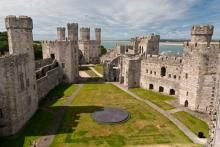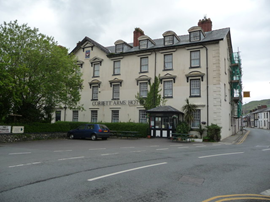Historic buildings definition
Approved document E: Resistance to the passage of sound, defines ‘historic buildings’ as:
- Listed buildings.
- Buildings situated in conservation areas.
- Buildings which are of architectural and historical interest and which are referred to as a material consideration in a local authority’s development plan.
- Buildings of architectural and historical interest within national parks, areas of outstanding natural beauty, and world heritage sites.
- Vernacular buildings of traditional form and construction.
An historic building is generally considered to be a building or structure that has some kind of 'historic value', i.e. people in the present are connected to it via past events in some way. This value warrants it being afforded consideration in planning decisions that have to be made concerning it.
A building may hold special historic interest because of its importance with respect to a particular historical event or period, or be associated with nationally important people. Alternatively, there might be special historic interest in the building itself, i.e. its construction methods, design, architectural significance, and so on.
Energy Efficiency and Historic Buildings, Application of Part L of the Building Regulations to Historic and Traditionally Constructed Buildings, published by Historic England in 2017, suggests that:
‘For the purposes of the interpretation of the energy efficiency requirements of the Building Regulations, Approved Documents L1B and L2B, and this series of documents, ‘historic buildings’ are defined as those which meet at least one of the following criteria:
- Listed in accordance with section 1 of the Planning (Listed Buildings and Conservation Areas) Act 1990 at Grades I, II* or II.
- In a conservation area designated in accordance with section 69 of that Act.
- Included in the schedule of monuments maintained under section 1 of the Ancient Monuments and Archaeological Areas Act 1979.
- Buildings which are of architectural and historical interest and which are referred to as a material consideration in a local authority’s development plan or local development framework.
- Buildings which are of architectural and historical interest within national parks, areas of outstanding natural beauty, registered historic parks and gardens, registered battlefields, the curtilages of scheduled ancient monuments, and world heritage sites.’
[edit] Related articles on Designing Buildings Wiki
IHBC NewsBlog
Images from inside a Grade II listed hotel show the scale of its collapse
The Corbett Arms in Tywyn has fallen into serious disrepair.
Old Sarum fire in listed (& disputed) WW1 Hangar - Wiltshire Council has sought legal advice after fire engulfed a listed First World War hangar that was embroiled in a lengthy planning dispute.
UK Antarctic Heritage Trust launches ‘Virtual Visit’ website area
The Trust calls on people to 'Immerse yourself in our heritage – Making Antarctica Accessible'
Southend Council pledge to force Kursaal owners to maintain building
The Council has pledged to use ‘every tool in the toolbox’ if urgent repairs are not carried out.
HE’s Research Magazine publishes a major study of the heritage of England’s suburbs
The article traces the long evolution of an internal programme to research 200 years of suburban growth
IHBC Context 183 Wellbeing and Heritage published
The issue explores issues at the intersection of heritage and wellbeing.
SAVE celebrates 50 years of campaigning 1975-2025
SAVE Britain’s Heritage has announced events across the country to celebrate bringing new life to remarkable buildings.
IHBC Annual School 2025 - Shrewsbury 12-14 June
Themed Heritage in Context – Value: Plan: Change, join in-person or online.
200th Anniversary Celebration of the Modern Railway Planned
The Stockton & Darlington Railway opened on September 27, 1825.
Competence Framework Launched for Sustainability in the Built Environment
The Construction Industry Council (CIC) and the Edge have jointly published the framework.














